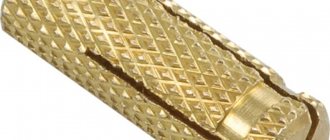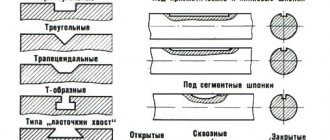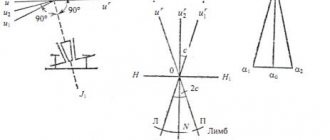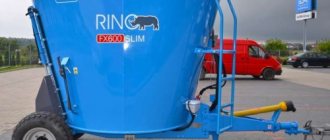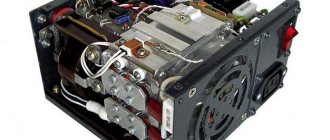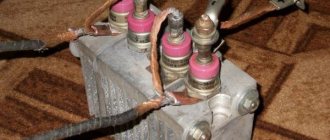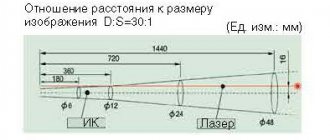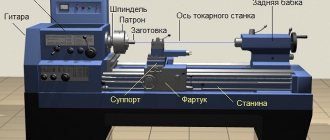One of the main technologies for processing plastics and manufacturing various parts and profile products from them is extrusion. It consists of preparing a polymer melt and then pressing it through molding nozzles - special attachments that give the material a given shape. The main element of a production line using a similar technique is a plastic extruder.
What is an extruder?
An extruder is a special device (machine) for the production of long products from flexible or granular materials using the extrusion principle. Extrusion is a technological process of continuously extruding molten or paste-like material through a molding tool to continuously produce products of a specific shape and size.
The extruder is combined with other equipment to form an extrusion line for a complete, continuous process.
Important! The main advantage of extruders is the ability to obtain a continuous product along the length and then cut it into pieces of the required size.
The machine has high productivity and provides precise shaping. The width and thickness of the product can be changed using an adjustment system. Maintenance is easy and the operator does not need to exert any physical effort to operate the machine.
Advantages
The extruder has a high level of productivity combined with low operating costs. For the full functioning of such equipment, a large number of maintenance personnel and deep knowledge of chemical processes are not required. It is easy to install and put into operation. If used correctly, the machine does not require frequent repairs. The ability to regulate various extruder parameters allows you to obtain high-quality materials of various thicknesses and widths required by the manufacturer.
Operating principle of extruders
The loader loads raw materials into the machine's hopper. This can also be done manually. The granules are poured into the hopper. They are pushed out of the hopper into the auger area and from there into the laminator. Along the way, the raw materials are mixed to achieve homogeneity of the future melt and are exposed to high temperature and pressure of the extruder components. The outlet is a transparent viscous mass that swells when stretched and melted.
If the extruder is a disk type, two disks are used as the transport device, one fixed and the other with constant rotation. The raw materials entering the hole of the static disk are mixed and homogenized. Equipment equipped with this device is ideal for obtaining homogeneous mixtures.
The piston extruder has low productivity, so its use is mainly limited to pipe production. The principle of operation is the compression of the material by a piston, which gives the finished product the desired shape.
One extruder is not enough for all these tasks. For mass production and high quality, additional machines or equipment are required. Together they form an extrusion line.
This means that not only the extrudate can be directly produced, but also the finished product, such as packaging film, plastic pipes or PVC profiles.
general information
An extruder is a machine that turns raw materials in the form of small particles into a melt of a certain shape.
Such particles can be granules, powder, various pastes or scrap. The process consists of passing raw materials through a special forming tool (extrusion head, die plate). The shape of the finished product is determined by a calibrating device with a certain cross-section. It will depend on the type of hole in the forming device. If it is a slot, the output will be a sheet material; if it is a ring, then the product will have the shape of a pipe.
The process that occurs using this equipment is called extrusion. Depending on the design of the machine, it is divided into several types:
- cold blue molding, in which only mechanical action is applied to the material;
- warm extrusion, which consists of mechanical transformations that are accompanied by heat treatment;
- Hot molding is a high-speed process that involves the use of high temperatures and pressure.
Extruder device
The operation of this type of equipment is best explained by the simplest type of this machine - a single screw extruder, also known as a single screw or single screw extruder. It has a single propeller and the machine has a single welded frame into which a vertical drive with thrust bearing is integrated.
The electric motor is connected to the gearbox through a special coupling. This ensures that it is below the plasticizing block. Heating is carried out by an electric unit that automatically regulates the temperature. Corrosion resistance is ensured by saturating the extruder elements with nitrogen vapor. Thanks to this, they will not fail and will be quite durable.
In addition to the above-mentioned instruments, instruments are mounted on the frame to monitor the production process. Control is carried out using the operator panel. Due to the compact dimensions of the resulting device, the screw can be placed directly on the output shaft of the gearbox.
Degassing process
Degassing is an important step in the production process. Raw materials for extrusion are not always ideal: they contain impurities, excess moisture and air. In order not to reduce the quality of the material due to imperfect granules, a degassing process is carried out in the machine. This is necessary to remove water, residual solvents and monomers from raw materials using high temperature or artificial vacuum. The process is carried out either using a screw, if the machine uses only one screw, or using a special chamber, if a multi-screw extruder is provided.
Role of the auger
The screw has several functions, depending on which the cylinder can be divided into several important areas:
- In the feed zone, the material is compacted, entering the auger zone, but remains solid;
- In the plasticization zone, the granules are melted, mixed and pressed under pressure as they pass through a screw;
- In the dosing zone, the material, consisting of a mixture of meltable granules and solid granules, is mixed until smooth and fed to the forming tool.
All processes are heated, and the temperature may vary from zone to zone. The quality of the resulting material depends on the conditions and completeness of the passage of raw materials through these processes.
Advantages of single screw and twin screw extruders
The key characteristic of the machine is the number and type of screws. The most common type is the single screw extruder. It is easier to maintain than other types of this machine. It only requires one operator to operate it, as all important controls are located in one place. However, if the machine is part of a larger extrusion line, a support worker may be required. The final number of operators and workers is determined by the technology and production goals.
Another important advantage of a single screw extruder is its ease of transportation. It can be transported from one plant to another or moved to a new location.
Sometimes, however, this extruder does not produce the desired melt quality of the final product, and then a twin-screw machine is used. This allows for better transport of raw materials and is suitable for hygroscopic granules. Often twin-screw machines have a self-cleaning function, which is also convenient to use.
Melting and cooling of polyethylene
Extruding polyethylene is not much different from extruding other polyolefins, but there is one important thing to remember. Melting polyethylene generates much more heat than, say, melting its “related” polypropylene. Therefore, if last time the extruder worked with polypropylene, and now it is necessary to extrude polyethylene, then before starting work you need to reduce the power of the heaters. If you neglect this rule, the film will crystallize, become brittle and opaque.
The same result - cloudiness and brittleness - can occur with improper cooling. Polyethylene must be cooled quickly and intensively. If the polymer retains its heat for too long, crystallization will begin, which will primarily affect the transparency and then the impact resistance of the film.
The extrusion process using an annular gap (this is what was described at the beginning of the article) has one significant drawback. The resulting film has an uneven thickness and often forms wrinkles. To reduce the risk of these side effects, a special extruder head was designed. Its inner and outer walls rotate simultaneously, minimizing thickness variation. The chance of wrinkles appearing is also noticeably reduced.
Despite this disadvantage, ring gap is the best extrusion method currently available. It is the basis of most polyethylene products that are used in production, construction and in everyday life.
What does an extruder operator do?
Modern machines are equipped with all the sensors that regulate the optimal conditions for the production of high-quality film. The operator's job, on the other hand, is to set all parameters correctly and maintain them throughout the entire process. The specific conditions depend on the type of material being produced, but there are a few criteria that are most important. They will be described below.
Temperature control
The operator must control the process of converting the granules into the finished molten material. This includes supervision of the operation of thermal automation. The system must ensure that the correct temperature is maintained both in each of the working areas of the extruder and in its components, the most important of which are the extruder head and nozzles. Each zone has its own device to fine-tune the operation of the machine and obtain the best quality in terms of uniformity, shape and other material characteristics. To obtain the best results, an experienced and responsible operator is required who can monitor and correct instrument readings.
Adjusting the auger rotation
The screw is an important part of the functioning of the extruder. It plays a particularly important role when the machine is part of an extrusion line designed to produce pipes or flexible packaging. Barrier screws increase productivity and improve the quality of the final product. Their function is to separate the feedstock from the finished alloy.
This is achieved by dividing the auger into two zones using an additional auger built into the auger. At the beginning of the granule flow line there is more room for granules, towards the end the channel containing the molten polymer increases in volume, and there is less space for unmelted material. Thus, the two factions do not intersect, but smoothly flow into each other.
Depending on the manufacturing process, screws can have different diameters and rotation speeds. The operator controls the latter through the operation of frequency converters. The higher the speed, the higher the performance of the extruder. However, this parameter must be carefully adjusted so as not to degrade the quality of the product. In modern equipment, frequency converters allow you to quickly switch from low to high speeds and vice versa, without intermediate steps.
Changing diameter and shape
Homogeneous molten material, which is the basis of the future product, passes through special holes. They give it the desired shape, such as rings. The operator must set the diameter of the ring, which gives the molten material the shape of a pipe of the desired size. The shape can be changed by applying compressed air. For example, the molten material can be blown further or directed into a gap between lifting rollers, which flatten the material and place it on the bottom of the machine in the form of a sleeve.
The resulting material can be cut on one or both sides using folding devices. Using special knives, the resulting product can be cut into small pieces after drying.
Extruders with barrier type screws
Barrier type augers (Fig. 21) are double-cut augers. This type of screw is mainly used for high-performance extruders.
The operating principle of all barrier augers is largely similar. The barrier zone begins at the point where the barrier flight is placed on the auger. The gap between the barrier turn and the cylinder is larger than the gap between the main turn and the cylinder. The size of the barrier gap should ensure the movement of the polymer melt over the barrier and prevent the movement of solid polymer particles. As a result, the solid material remains on the active side of the barrier coil, and the polymer melt on the passive side. Thus, the barrier coil leads to phase separation, separating the solid material from the melt (Fig. 22). Because solid material can plug the channel, melting must begin before the barrier zone begins to allow the barrier coil to be used.
As the screw moves, the cross-sectional area of the channel for moving solid material decreases, while the cross-sectional area of the channel for the melt increases. At the end of the barrier zone, the melt channel occupies the entire
Rice. 21. Barrier type screw
Rice. 22. Phase separation in a barrier screw
cross section. This geometry ensures complete melting of the solid material. It is permissible for a solid material to cross the barrier gap, but only if its particles are reduced in size so much that they can melt quickly enough. This configuration ensures optimal pellet melting. Another advantage of the barrier design is that flow through the barrier gap occurs at a relatively high shear stress, which ensures active mixing of the melt.
What types of extruders are there?
All extruders, regardless of the scope of application, consist of basic working mechanisms:
- Asynchronous electric motor.
- Loading hopper.
- Auger.
- Heating element.
- Extruder head.
Modern extruders are divided into several categories, depending on the type of transport mechanism used:
- single-screw, twin-screw, multi-screw units;
- piston;
- plunger extruders;
- disk, multi-disk;
- combined.
Screw machines are the simplest and most popular. The auger occupies the central part of the entire machine. Its operation resembles that of a regular meat grinder.
There are different types of screw extruders:
- parallel and conical;
- with normal speed and high speed;
- co-directional and rotating in opposite directions.
Extruder for PVC profile
The production of plastic or composite profiles is mainly carried out by extrusion. For this, depending on the material and complexity of the product shape, single- or twin-screw machines with corresponding forming heads are used.
The range is very wide - from thin strips or tapes to sheets, large panels and complex geometric shapes. Widely used plastic window and door systems are assembled from PVC profiles manufactured in this way.
Adding special components to the polymer makes it possible to obtain complex composites, for example, wood-plastic structures, which are also often used in the manufacture of various building structures.
Extruder for pipe production
It is important that no gas bubbles remain in the homogenized material during pipe production, which is why pipe extruders must be equipped with a degassing system. Typically these are twin-screw machines that, among other things, use so-called barrier screws to reliably separate the not yet solidified semi-finished product from the fully molten product. This ensures complete homogeneity of the composition, which is very important for the performance characteristics of the produced pipe.
Extruders for polyethylene
All plastic films are produced exclusively by extrusion. A blown extruder is used to produce the film. An extruder for stretch film can be made in the form of a narrow slot - the output is a single-layer film of the required thickness and width.
Some models use large-diameter round slot nozzles to produce a film in the form of a sleeve.
Mini-film extruders produce polyethylene up to 300 mm wide and up to 600 microns thick. The small size of the machine allows it to be installed even in a traditional room.
You can buy an extruder for film using the link https://proplast.ru/search/buy/3629/1/extruder%20for%20film/
Operating rules and selection of a manual welding extruder model
Before use, it is necessary to fulfill a number of conditions usual for plastic: clean the surface of the products to be joined from external contaminants and avoid working with wet material.
The success of the work also depends on the difference in the melting temperatures of the materials being joined, if they have different chemical compositions. For example, HDPE with polypropylene can be welded using the method under consideration, since their melting temperature ranges completely or partially overlap. On the contrary, welding HDPE with PVC, and even more so with polypropylene, is problematic or completely impossible. In such cases, a welding extruder can only be used to join products made from the same materials.
The compactness of the manual welding extruder allows its effective use even without stopping the operation of the connected devices. In particular, when welding polypropylene pipes, it is not necessary to turn off the water supply through them.
A number of mandatory checks are carried out first (especially if the extruder has not been used before):
- Checking the straightness of the feed of the filler rod in the extruder sleeve: with high roughness of the forming rod, the rod can move not in a straight line, but along a helical line, which will worsen the operating conditions of the screw crushing device and lead to the formation of granulates that are not uniform in size.
- Control check of the effectiveness of the heating temperature of the rod to the state of its viscosity: material from different manufacturers may have a different range of melting temperatures.
- Checking the reliability of pressing the welding nozzle to the surfaces being joined, especially if they have a complex configuration. Many models of manual welding extruders are equipped with replaceable nozzles for this purpose.
- Checking the possibility of melting the materials being joined with heat from a thermal heater, without supplying a filler rod. It is carried out in the absence of accurate information about the material of the products connected in this way.
The selection of a suitable manual extruder model is made according to the following parameters:
- By productivity per unit of time;
- For the convenience of managing process parameters;
- According to the thickness of the welded products;
- By equipping the device with replacement devices
- According to the range of rod diameters.
It should be noted that most brands are designed to work with filler material from a specific manufacturer (often the same one that produces extruders).
Theoretically, it is possible to make a household welding extruder with your own hands. To do this, a screw drive is attached to a conventional industrial hair dryer (for example, for grinding feed), and both units are designed in a compact form. Instead of a screw, a more affordable plunger drive is sometimes installed, but this option is unreliable: it all depends on the homogeneity of the material of the original rod. The electric motor for the drive is selected as a commutator type, which better tolerates constant changes in torque values.
Flat slot extrusion
This method is used to crystallize polymers that form melts with reduced viscosity. Compared to tubular films, the structure of flat films is less strong and dense, but they are transparent and flexible. Extrusion of flat sheets occurs at high temperatures, so such films have much fewer defects.
Schematic diagram of the production of polyethylene films using the flat-slot method:
1 – extruder; 2 – slot head, 3 – cooling drums, 4 – edge trimming mechanism, 5 and 6 – pulling rollers, 7 – guide rollers, 8 – winding unit.
The molten polymer is extruded through a slot in the extruder head. The thickness of the groove is adjusted using forming jaws, one of which is fixed, and the other is adjusted to the required distance depending on the given size.
The output is a continuous web, which is fed onto the smooth surface of the cooling drum. The extruder cooling drum is made of chrome-plated steel. Polished surfaces coated with polyethylene film are sprayed with water and cooled to a temperature of 40 to 70 degrees Celsius. The film is then fed through pull rollers, cut and wound into rolls on a winder. The film thickness must be the same along the entire length of the forming slot to achieve the same degree of extrudate viscosity.
Manifold-type extruder heads are very common in modern production. Here the extruded melt flows out from several points simultaneously and is thus distributed more uniformly. The distribution channel is made in the form of an elongated cylinder with a distribution screw inside, which ensures uniform distribution of the melt over the entire width of the slot die and prevents stagnation inside the channel.
The surface temperature of the cooling drum must also be uniform. The temperature difference throughout the entire volume should not exceed two degrees. To produce a super-glossy and transparent polyethylene film, the molten extrudate, forced through the slit, is directed into an ice water bath for more forced cooling.
Advantages of the flat-slot method:
- High process productivity.
- Polyethylene films have excellent optical properties.
- There are practically no areas of different thicknesses.
Technologies for the production of plastic parts by co-extrusion
Modern technologies make it possible to produce polymers, building profiles, sheets, containers, electrical wire coatings, pipes and many other plastic products that meet a large number of requirements. They must be simultaneously:
- durable;
- lungs;
- environmentally friendly;
- durable;
- resistant to aggressive environments;
- visually attractive;
- water-, gas-tight, etc.
Coextrusion (another name for coextrusion) is the most progressive method in which polymers with different properties form multifunctional multilayer materials in which each layer retains its individual characteristics.
Vivid examples of the use of co-extrusion materials are packaging film for pharmaceuticals, vacuum sealing of perishable products with different shelf life, etc. Such multilayer films consist of several layers (from 3 to 11, and in some cases more). The minimum thickness of one layer is 2 microns, the maximum is 2-3 millimeters.
Co-extrusion technology involves the simultaneous operation of several extruders + the presence of a single molding unit. Using this method, a completely finished material is obtained in one process. This means that finished parts and molded products do not need to be sent for painting, priming, gluing and other additional processing.
Extrusion lines
In industrial conditions, the extruder is one of the main components of the entire extrusion line, which in addition to it includes a number of other installations and mechanisms:
- Raw material preparation and supply system - sometimes semi-finished products must be pre-dried and calibrated before being fed into the loading hopper.
- Cooling system - installed at the exit of the extruder to accelerate the polymerization of the product. It can be of various types, for example, in the form of an air cooling system or a cooling bath.
- Mechanisms used to pull the finished profile through the machine.
- Marking and lamination systems with different operating principles.
- Winding and cutting mechanisms that give products the required shape for storage and transportation.
Other mechanisms and technological equipment can be used to automate the continuous production process.
Coronary polymer treatment
Chemically inert surfaces of polymer products made by extrusion usually do not form strong bonds with printing inks. When ink, glue or dyes are applied to non-porous surfaces, the liquid is not absorbed but beads up and runs off immediately.
For the production of printed packaging or promotional packaging, extrusion lines are equipped with special corona treatment to improve the adhesive properties of the film. The surface energy of films treated with corona discharge increases and is 7-10 dynes/cm above the surface tension of the liquid medium. As a result of microetching, smooth surfaces with an active structure are well wetted and are ready for painting, gluing, flexo printing, patterning and other types of processing.
Description of the co-extrusion process
The polymers used in coextrusion vary in melting point, viscosity and other properties. Each material must meet certain conditions to achieve consistently high quality plasticization.
A co-extrusion plant consists of 2-3 or more extruders into which a specific type of raw material is loaded. And each melt has its own viscosity and temperature. The materials individually undergo all standard processing steps. Each melt reaches the desired temperature. The molten masses from individual extruders enter under a certain pressure into a common co-extrusion head, where all fractions are combined. After the layers are formed and the finished material is released, subsequent cooling and winding operations are performed according to standard algorithms.
Co-extrusion equipment uses molding tools of the most complex shapes. And when calculating the parameters of the extruder head, polymers with a maximum melting point are taken as a basis.
Co-extrusion and co-extrusion.
Coextrusion is a technology used to produce multilayer films.
The following raw materials can be used: low and high density polyethylene, polypropylene, polyamide film and other polymers. The granules of these plastic masses are melted in different extruders, after which they are combined and passed through one molding die (head). For strong bonding, the molecular network of polymers must be similar in structure. But if you need to bind a barrier layer, for example, EVOH and linear polyethylene, then special binder copolymers are required.
Co-extruded multilayer films are used for vacuum sealing of products, such as transport packaging, agricultural film (for mulching, film with antifog effect), pharmaceutical packaging.
Using a similar technology, called co-extrusion, siding panels and PVC profiles are produced. Polyvinyl chloride is the basis of the profile, occupies about 80% of the panel thickness, the remaining 20% is acrylic. As in the case of coextrusion, the operation of two coextruders is used, where PVC and acrylic are melted separately. These melts are combined in a slot filler, from where they emerge as a ready-made soldered product.
In what areas are extruders used?
Extrusion technology has found applications in the areas described below.
- Chemical industry. This is the area where plastics (rubber, plastic, etc.) and ferrites are produced. The chemical composition of the raw materials used remains unchanged, the extruder is primarily designed to obtain the desired shape of the final product. Therefore, installation of such equipment is relatively simple.
- Food industry. Extrusion can also be used in food production. This is usually a more complex process than the previous example. Equipment settings involve subtle changes in temperature, speed, pressure, which lead to changes in the characteristics and properties of the feedstock, for example, denaturation of proteins, decomposition of carbohydrates or gelatinization of starch.
Application of extrusion technology
- Chemical industry. Almost all thermoplastics and their compositions can be processed by extrusion into finished products (films, pipes, insulation shells, siding, sheets).
- Production of compound feed. The crushed raw materials for the production of mixed feed enter the extruder, where they are subjected to compaction, compression and heat treatment at temperatures up to 200 0C. This processing method increases the nutritional value and digestibility of feed, retains vitamins in it and prevents the proliferation of microorganisms.
- Briquetting of solid biofuel. Processing of biomass (peat, coal dust, sunflower husks, sugar production waste, soybean straw, wood chips) and pressing it into granules or briquettes is carried out using extruders;
- Food industry. Pasta, corn sticks and flakes, chewing gum and chips, soy products—all of these products are made using food extrusion.
Dough extrusion, dough extruder
The development of extrusion production is now proceeding in three directions. These are: improvement of existing equipment, use of new polymer compositions, improvement of automated control systems. The last direction seems to be the most relevant - installations equipped with microprocessor-based automated control systems have already appeared in Russia. They allow you to automatically control not only the operation of the extruder, but also the systems for preparing raw materials, calibrating and cutting finished products.
Extrusion Line Manufacturers
Extrusion lines are in great demand and are produced in many countries in Europe and Asia. The traditional leaders in the production of this type of equipment are considered to be Austrian manufacturers, who have been producing such lines since the middle of the last century. European systems have always been of the highest quality, using the latest innovative developments in plastics processing technology.
Recently, the extrusion line market has been flooded with products from Chinese manufacturers. Contrary to popular belief, this does not mean its low quality - both the reliability and properties of the equipment produced generally meet modern requirements. In addition, prices for extruders from China can be significantly lower than in Europe.
Domestic manufacturers are also trying to keep up. For example, extrusion lines produced in the Penza region, or groups from Podolsk and Voskresensk near Moscow, are in demand.
The price of plastic extruders varies depending on the country of origin and the individual characteristics of the machine.
Equipment classification
The first extruder saw the light back in the 19th century, and by the 20th century many modifications of this equipment had been created . Modern extruders have several classifications. According to the type of transporting device, they are divided into the following types:
- single screw;
- twin screw;
- multi-screw;
- disk;
- piston;
- combined.
According to the location of the screws:
By rotation frequency:
In direction of rotation:
How to choose the right equipment
In order for a product to be truly high quality, certain criteria must be met. Among them are the following:
- The average user should be able to configure the equipment;
- All components and parts must be of high quality;
- The warranty for the machine must be provided by the manufacturer;
- A range of polymers available;
- If any parts fail, it is important that they can be replaced with new ones.
